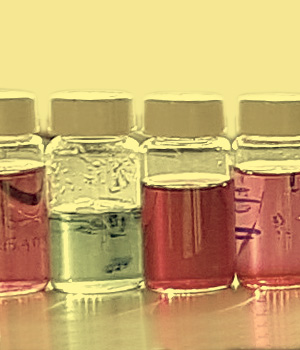A new color, a new drug?
The broad applicability of colorful vitamin B12 derivatives
The most visible property of vitamin B12 is its intense red color. B12 forms, together with other natural products like chlorophyll or heme, a powerful team of ‘pigments of life’.
You might think of color as something purely aesthetic but actually, these natural pigments have extraordinary roles in nature. For example, chlorophyll dyes plant leaves green and allows them to transform light into energy, or heme colors our blood red and transports oxygen within our body. So… what’s special about vitamin B12?
Vitamins are nutrients that are absorbed through our diet and that fulfil a fundamental physiological role. We ingest B12 every time we eat for example meat. Once it is in our body, B12 is involved in cell growth processes. In fact, the relationship between B12 and cell growth can be taken advantage of for medicinal applications.
Therefore, we at the Zelder chemistry lab (University of Zurich) use vitamin B12 as a starting point towards the development of new therapeutic agents (substances that are capable of producing a curative effect in a disease state). After years of chemical research modifying this vitamin, we have found that B12 derivatives can have many colors: different colors mean different structures and properties. It is possible that one of these modified B12 derivatives will eventually become the next big drug against cancer or bacterial infections. Considering this cutting edge research, it may be time to rethink vitamin B12 not only as a nutrient, but rather as a dye and even as a potential therapeutic agent for todays and tomorrows unmet medical needs.
Related contributions
